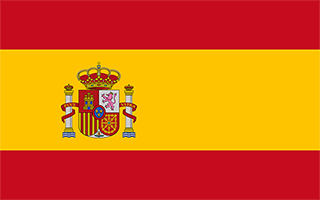Facts and Data
Webpages:
Official Unesco Page
Salamanca
Salamanca (World Heritage Cities of Spain)
Salamanca, patrimonio local, patrimonio mundial (only in spanish)
View photos from OUR PLACE the World Heritage collection
Ciudades Patrimonio de la Humanidad de Expaña
Patrimonio de la Humanidad en España (in Spanish only)
Basis Data:
Unesco World heritage since: 1988
Size of heritage: 51 ha
- Buffer zone: 130 ha
Coordinates:
Longitude: -4,336°
Latitude: 40,965°
Summary
This ancient university town north-west of Madrid was first conquered by the Carthaginians in the 3rd century B.C. It then became a Roman settlement before being ruled by the Moors until the 11th century. The university, one of the oldest in Europe, reached its high point during Salamanca's golden age. The city's historic centre has important Romanesque, Gothic, Moorish, Renaissance and Baroque monuments. The Plaza Mayor, with its galleries and arcades, is particularly impressive.
Location on Map
Show bigger map on Openstreetmap
Old City of Salamanca
The Old City of Salamanca, located in the Province of Salamanca, in the Autonomous Community of Castile-Leon, is a UNESCO World Heritage site renowned for its rich history, architectural beauty, and cultural significance. With its origins dating back to pre-Roman times, this ancient city has evolved into a vibrant center of learning and a testament to the region's historical and artistic legacy.
History
The history of Salamanca can be traced back over two millennia. The city was originally settled by the Celtic Vettones, and later became an important Roman trading post known as "Helmantica." During the Middle Ages, Salamanca flourished as a center of learning and culture, attracting scholars from across Europe to its prestigious university, founded in 1218.
Throughout the centuries, Salamanca experienced periods of prosperity and decline, witnessing the influence of various architectural styles. The city's historic center, known as the "Old City," is a remarkable blend of Romanesque, Gothic, Renaissance, and Baroque architecture, reflecting its diverse cultural heritage.
Current State
The Old City of Salamanca stands as a testament to the city's rich history and architectural grandeur. Its well-preserved buildings and landmarks offer visitors a glimpse into the past, while its vibrant atmosphere and lively streets make it a thriving modern city.
One of the most iconic landmarks in Salamanca is the University of Salamanca, one of the oldest universities in Europe. Its stunning Plateresque façade, adorned with intricate carvings and statues, is a masterpiece of Spanish Renaissance architecture. The university's library, the Biblioteca General Histórica, houses a vast collection of ancient manuscripts and books, attracting scholars and researchers from around the world.
The Plaza Mayor, a magnificent square dating back to the 18th century, is another highlight of the Old City. With its elegant arcades, ornate balconies, and bustling atmosphere, it serves as the heart of Salamanca's social and cultural life. The square is also home to numerous cafes, restaurants, and shops, making it a popular gathering place for locals and tourists alike.
Other notable landmarks in the Old City include the Old Cathedral, a stunning example of Romanesque and Gothic architecture, and the New Cathedral, a masterpiece of Spanish Gothic art. The Casa de las Conchas, a 15th-century building adorned with over 300 scallop shells, is another architectural gem that attracts visitors with its unique design.
Today, the Old City of Salamanca continues to thrive as a vibrant cultural and educational hub. Its narrow streets are lined with charming shops, traditional taverns, and lively bars, creating a lively and welcoming atmosphere. The city's rich cultural heritage is celebrated through various festivals and events, including the renowned Salamanca International Film Festival and the Festival of Classical Theater.
In recognition of its historical and architectural significance, the Old City of Salamanca was designated a UNESCO World Heritage site in 1988. Its timeless beauty and cultural importance make it a must-visit destination for those seeking to immerse themselves in the rich history and vibrant culture of Spain.
Hotels and places to stay
Solaz del Moros
Videos from the area
Videos provided by Youtube are under the copyright of their owners.




